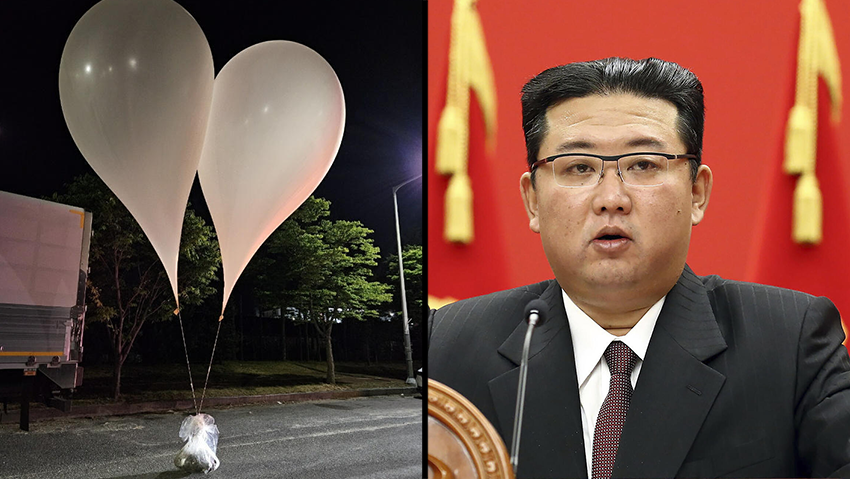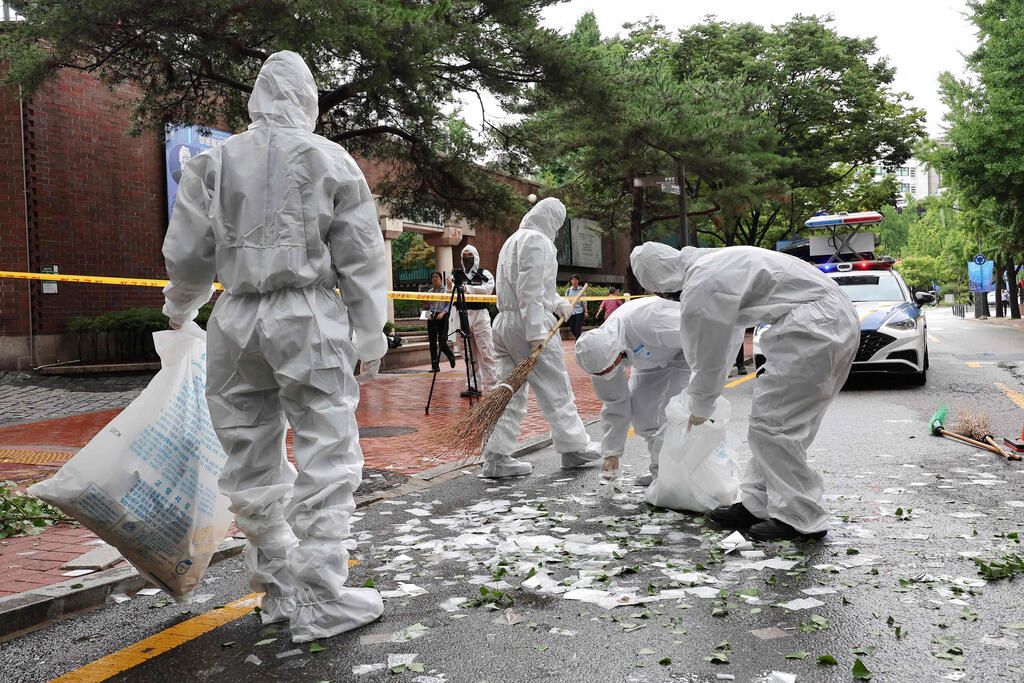Getting your Trinity Audio player ready...
Kim Jong Un's balloon operation exceeded expectations on Wednesday, as debris from at least one balloon launched from North Korea landed in the presidential compound of South Korea's capital, Seoul, with two additional balloons landing nearby. While it is unlikely that Pyongyang specifically targeted the presidential compound – given the probable lack of sophisticated technology to ensure such precise landings – the fact that they landed within and near the fortified compound raises significant security concerns.
Relations between North and South Korea have significantly deteriorated in recent years. For about two months, Pyongyang has been launching balloons toward the south, attached to which are bags containing various types of trash, such as tattered clothes, cigarette butts, empty snack packs, and even human excrement. So far, more than 2,000 such balloons have been launched. According to North Korea, this bizarre operation is retaliation for Seoul allowing activists against the Kim regime to launch balloons from South Korea into the north, carrying leaflets with anti-regime messages and broadcasting anti-regime slogans and K-pop songs through loudspeakers across the border.
In recent weeks, North Korean garbage balloons have landed in several corners of Seoul, but today's balloons were the first to reach the presidential compound. It is unclear if President Yoon Suk Yeol was in the compound when they landed, but his office reported that an inspection revealed the debris did not contain any hazardous materials and no one was harmed.
The arrival of the balloons at such a sensitive facility in Seoul has prompted questions about security policies in South Korea. Local experts have stated that in the future, the country will need to intercept such balloons to protect symbols of governance, as future balloons might carry hazardous materials. The presidential compound in Seoul is designated as a no-fly zone, leading some to view the balloon landing there as a security breach. Until now, South Korea has refrained from shooting down the garbage balloons to avoid harming bystanders with bullets or dispersed hazardous materials.
When North Korea launches balloons toward the south, it generally relies on wind directions to make rough predictions about where they will land. In the past, they have attached timers to some balloons, likely intended to allow the garbage bags to open while the balloon is in the air, thereby increasing the spread of litter and environmental damage. If it turns out Pyongyang attached timers or other devices to intentionally scatter garbage in the presidential office, it is likely South Korea will respond more harshly than before.
Jung Chang Wook, head of a security research institute in Seoul, is confident that today's balloon landings in the compound area were accidental. "North Korea does not have the technology required to target balloons at specific locations," he said. According to him, precise targeting of a balloon requires the use of GPS devices and electrical systems, which it is clear Pyongyang does not possess. It is likely that the north's sole aim was for the balloons to fall within the Seoul area, which is about an hour's drive from the border between the countries. To achieve this, North Korea probably considered factors such as weather conditions, wind directions, the weight of the trash bags, and the amount of air in the balloons.
Lee Il-Woo, another security expert from South Korea, added that even if North Korea had the necessary guidance means, strong winds would have prevented them from directing the balloons to specific targets.



